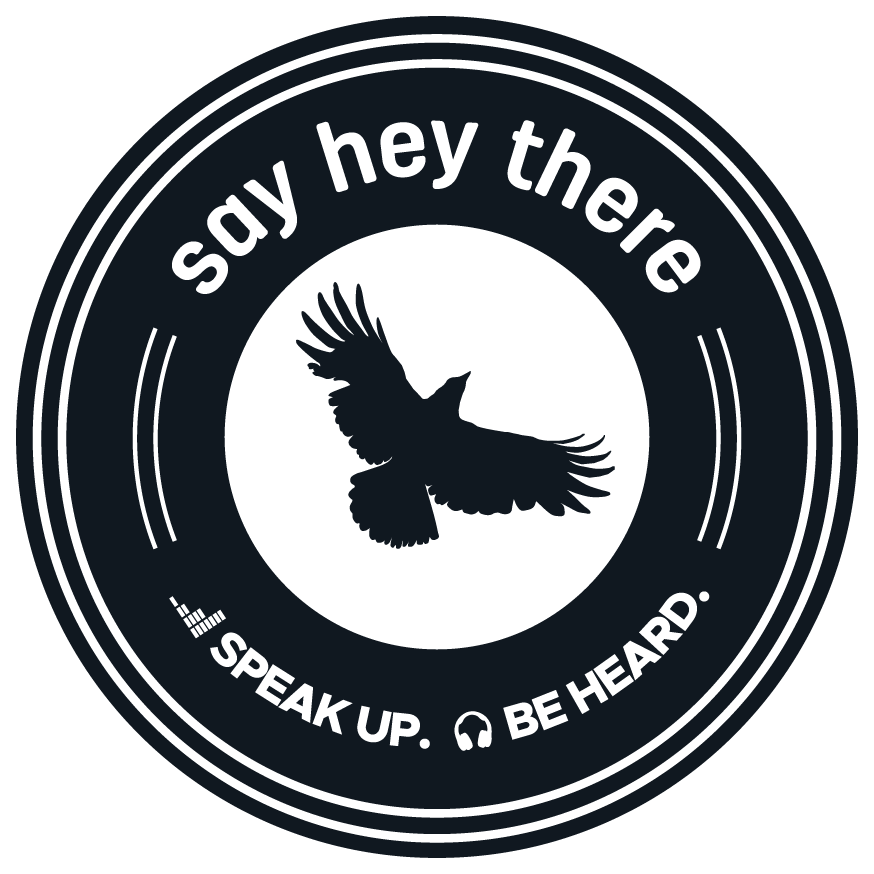Here’s everything you need to know about the third glorious day at Social Media Week NYC!
Organic Reach Is Dead: Learn How to Pay Like a Pro
With organic Facebook reach getting lower and lower and rumors of a Facebook-style filtered feed for Twitter, we can safely say that organic social for brands is disappearing.
The bottom line: today you have to pay to reach your audiences, especially on Facebook and soon to be for other networks as well.
This session centered around strategies, best practices, and insights on how to build successful advertising campaigns across the top social platforms, including those ad spaces that most brands don’t have access to yet like Instagram and Snapchat. Today we have to ask ourselves how we’re going to build an ad campaign that will reach the same people we used to reach organically, and this session provided some answers.
- Twitter is rumored to launch a filtered feed similar to Facebook’s. Right now it’s a realtime platform, but we soon may start seeing only the tweets Twitter thinks we really care about. They’ve already been testing the waters with their “while you were away” feature. (While there may be proven algorithms surrounding the filtered feed, one can’t help but wonder if avid users will miss filtering the feed for themselves.)
- Instagram ads are currently being tested with large brands, which they are open about. Since Facebook bought out Instagram, I’m sure ads will become a regular part of the Instagram experience at some point. But ads often taint the social experience; will this change be accepted by users?
- Promoted pins on Pinterest, while scarce, are now available. Any brand can build their own cpc-based campaign now to drive traffic to their website.
- While Google+ doesn’t have brand advertising, you can use your Google+ profile to assist in your SEO efforts.
- Looking for an engagement dashboard? If you’re a smaller brand, try Sprout Social; if you’re a larger brand, look into Brand Watch!
Which Platforms Should You Advertise On?
- Facebook is best for B2C. If your goal is to increase conversions on your website, Facebook’s tracking and optimization tools can help. By placing a conversion pixel on your website and then adding it to a Facebook ad, you’ll know exactly which ads led to your conversions.
- Twitter is more expensive, but you see direct results.
- Twitter not only offers tracking pixels, it will show you who sees and engages with your tweets
- Objective-based ads similar to Facebook are now available
- Use Twitter cards to create more valuable ads (easily direct traffic to your website, capture emails, etc.
- On Linkedin, try sponsored posts that position you as a thought leader.
- Vine was acquired by Twitter and does not support advertising, but you can partner with an influencer and pay them to cleverly advertise your product/service and then embed a vine video within a tweet and promote.
- Instagram, Pinterest, and Snapchat are best for B2C advertisers as they rely heavily on visuals.
- IG and Snapchat advertising is only available to select large brands.
- Snapchat puts sponsored content and articles in a completely different area so it doesn’t interfere with feed, which offers a nice compromise.
The Future of Mobile Payments: A Conversation with John Collison, President and Co-Founder of Stripe
John Collison is president and co-founder of Stripe, the online payments company that is helping to propel e-commerce to another level by making it easier to process transactions.
Cashless mobile payments are essential for retailers and social networks (as evident from Facebook and Twitters “buy” buttons, both powered by Stripe’s code), and with high-profile partnerships such as ApplePay, Google, and Kickstarter, Stripe is raising the bar. Here are some of the key points from the Q&A session.
- Buying patterns are totally different on mobile than they are on desktop.
- We’re going to start seeing more mobile-specific platforms that could not have existed on desktop or laptop.
- ApplePay is ahead of everyone else and rethought the entire mobile payment system. Before it was just sort of a “peck away your details” system.
- ]Merchants are looking for new distribution channels. For instance, email marketing is changing and becoming less reliable as a marketing tool. One indication of that is Gmail forcing promotional material into a separate tab away from primary messages.
- Stripe’s mission is to allow for easy global payments. Right now we have a broad problem of these artificial zones that don’t talk to each other when we should be able to sell to anyone anywhere.
- With digital goods and e-commerce, payments are the only thing preventing people from shopping globally.
- One of Stripe’s favorite stats is that only 2% of global consumerism happens online today. That’s going to increase dramatically if the payment parameters change.
- Right now people assume that a bank has to be involved (in order to get a credit/debit card, etc.), but that’s not necessarily true; one example would be the launch of the innovative-yet-still-elusive Bitcoin, which will be important in countries where credit or debit cards aren’t available.
- The Stripe thesis is that in the online world, payments really matter and affect revenue/donation numbers. In the instance of nonprofits, are we making recurring donations an easy option? Can they text donations? We need to make the flow from intent to deposit as easy as possible.
- The biggest challenge preventing Bitcoin from taking off? It’s a 2-sided network that requires both merchant and consumer acceptance.
10 Years of Digital: A Fireside Chat with Pete Cashmore, Founder and CEO of Mashable
Mashable’s mission is to document the digital revolution and how it globally empowers and inspires. In this session, 29-year-old Mashable Founder and CEO Pete Cashmore discussed how the news source became what it is today and the evolution of digital media.
- Mashable didn’t really take off until Twitter and realtime reporting were born; before that it was like “blogging in the dark.”
- All the major social events (Facebook launch, first tweet, etc.) happened in the past 7 years, but we’ve seen exponential growth in the past year alone. There is more opportunity now than ever before to shake it up and do something huge in a short amount of time.
- What one technological invention of the past decade has made the biggest impact? The impact of and groundbreaking transition to the iPhone and smartphone is something we may never see again in our lifetime.
- What technological innovations will the future bring?
- According to Cashmore (and others), we should have our eyes on self-driving cars and AI. In addition, there is a current limitation with screens.
- Phone screens have become bigger recently (while not Zach Morris big), but a solid screen that is unprotected and does not fold up may be reinvented. CES has already demonstrated scroll or roll computers that may break the design consideration of forcing users to choose between wanting a big screen and something portable.
- Do people want to speak to their devices? What does the future hold for technology like Siri and Echo? The challenge according to Cashmore is overcoming the weirdness involved in using it. Technology has to fit within societal and cultural norms. Although voice control has been getting much better and more accurate it remains to be seen if it has a strong place in the future.
- Mashable is moving from realtime news to predictive news. Algorithms do the grunt work to find the big story everyone will be talking about six hours from now, and human editors write the content.
User Generated Content: The Ultimate Human Content Connectivity
User Generated Content (UGC) is a broad topic that can range tremendously from very socially driven, to crowd-sourced and from both organic and paid. This session dove into the different types of UGC, new ideas, best practices, and legal implications to consider.
- What is UGC? It’s content that is generated by individual users that has potential to drive conversation, such as blog posts, comments, and tweets.
- As marketers, before maximizing on UGC we have to fact-check and confirm authenticity, not to mention run any promotions through compliance or legal. Just like with those email forwards (FW:FW:FW:RE:FW: DANGER: Your car may explode if you talk on your cell phone at a gas station pump!), it may sound legit and plausible, but a quick fact check can reveal a much different truth.
- So someone tweeted out something nice about your brand with a cute little photo and everything, and you want to use it in your marketing campaign. Just tweeting to them requesting (and getting) permission is not enough to give you legal rights to use the image. When dealing with such matters, it’s important to consult a lawyer who specializes in advertising.
- UGC can be used to help with a variety of business objectives including ideation and product development – not just marketing.
- We have seen a seismic shift in how we consume and trust information – more and more people read things that come from their networks over professional journalism.
- What ruins UGC?
- Hiring people with big followings to generate content for you (paying for advertising when people don’t really believe in the product).
- You can have a level of curation, but don’t stifle the debate – be transparent and allow for interesting dialogue – users end up doing the policing for you through upvoting and downvoting.
- Notable UGC
- Disney showcasing unfiltered TripAdvisor reviews on their website
- Dove “real beauty sketches” campaign that is still going strong even though inactive
- Video potentially the most valuable of all UGC
- What’s beyond UGC? Sephora calls on their salespeople to generate content by posting makeup tutorials and tips.



